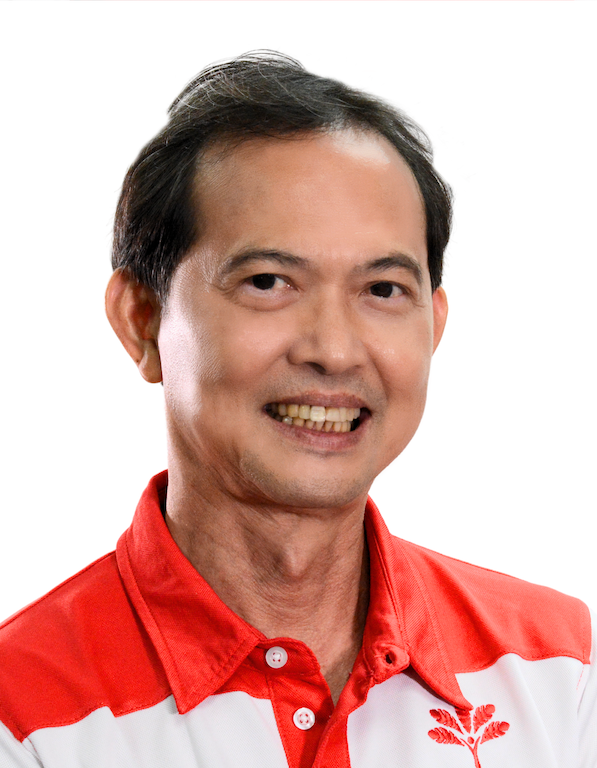Mr Speaker Sir,
As my colleague Hazel Poa said, I will be elaborating further on the history of the GRC system and how the PAP have regularly made changes to electoral rules to entrench its political dominance.
The introduction of the GRC system was part of a package of Constitutional innovations during the 1980s, which also included the introduction of the Elected Presidency.
The 1980s was a politically significant era for Singapore. It began with J.B. Jeyaretnam breaking the parliamentary dominance of the PAP during the 1981 Anson by-election. Later, the 1984 General Election saw a 13% swing against the PAP and the election of two Opposition MPs – J.B Jeyaretnam and Chiam See Tong. All this took place amidst a changing of guard in the PAP. Mr Lee Kuan Yew and the other Old Guard ministers retired and the 2G team led by Mr Goh Chok Tong took over.
The PAP has always denied accusations that the introduction of the GRC system and the Elected Presidency was to entrench its political dominance. At the beginning, both constitutional innovations were meant to fulfil a specific purpose. The GRC system was meant to ensure that there would always be a minimum level of minority representation in Parliament. This became increasingly important as resettlement and the creation of HDB new towns under the Ethnic Integration Policy meant that there were no longer any more Malay-majority constituencies. The Elected Presidency, on the other hand, was meant to safeguard our increasingly large Past Reserves by creating a second key to the Past Reserves that was independent of the elected Government.
I think that many Singaporeans would have no objections if these schemes stayed true to their original purpose. However, both the GRC system and the Elected Presidency have been subject to many changes over the years.
Although these changes have had various justifications, it is still difficult for the public to be convinced that these frequent changes are not motivated by political reasons.
For example, when the GRC system was introduced during the 1988 General Election, all GRCs had three members. This was later expanded to a maximum of four in the 1991 General Election. The reason given by then-PM Goh Chok Tong was to provide flexibility, so that we could “minimise major changes of boundaries to GRCs which have grown too big for the number of MPs serving them”. This reason was still plausible and acceptable.
But then, at the 1991 General Election, the Opposition won an unprecedented four seats in Parliament. This was followed by further tweaks to the GRC system. GRCs were expanded to a maximum of six members from the 1997 General Election onwards.
PM Goh justified this move by claiming that he wanted to devolve more authority to the local communities, by setting up Community Development Councils (CDCs). Because CDCs needed economies of scale and a critical mass of residents, PM Goh said that “increasing the maximum number of MPs in a GRC from four to six will give more flexibility to the Electoral Boundaries Review Committee to configure a GRC which is the right size for this purpose”.
Many Singaporeans, including myself, have never been convinced by this reasoning. CDCs can be formed by six adjoining SMCs, or two three-member GRCs. There is no need for six-member GRCs. Instead, many Singaporeans believed that the PAP Government expanded GRC sizes to hamper the Opposition’s electoral chances after a strong showing in the 1991 General Election.
There are several ways in which GRCs can be used to maximize the PAP’s political advantages.
Firstly, the varying sizes of GRCs provide maximum flexibility for the Electoral Boundaries Review Committee (EBRC) to redraw boundaries in a way that can be advantageous for the ruling party. Since 1988, SMCs that have been absorbed into GRCs have had a higher average vote share for the Opposition than the average SMC.
In many of these SMCs, the Opposition polled above 40%, such as Braddell Heights, Bukit Batok, and Changi in 1991, Joo Chiat in 2011, and Fengshan in 2015.
Only SMCs and GRCs that the Opposition have won are consistently spared from changes in their electoral boundaries. I therefore fully expect West Coast GRC and other constituencies where PSP contested in the last election to disappear or have their boundaries heavily redrawn in the next election. If that happens, I hope Singaporeans will open their eyes and decide for themselves if these changes are due to population shifts and housing developments, or other reasons.
As a result of the GRC’s boundaries, many HDB towns and planning areas in Singapore are fragmented among multiple GRCs, and by extension, town councils and CDCs. For example, Serangoon town is divided between Marine Parade GRC, which is in South East CDC, Aljunied GRC, which is in North East CDC, and Ang Mo Kio GRC, which is in Central Singapore CDC. The EBRC has never explained the reason for drawing such peculiar boundaries. Such an arrangement can hardly foster a sense of community among local communities, which the PAP government has claimed is the purpose of CDCs. It instead gives rise to suspicion among Singaporeans that the PAP is manipulating the GRC system for their political benefit.
Secondly, because GRCs are larger, their demographic composition can be adjusted to ensure that the vote share for the ruling party in GRCs is less likely to deviate significantly from the vote share for the ruling party at the national level. This is unlike SMCs where the smaller number of voters creates more opportunities for divergence in election results.
Given our First Past The Post voting system where the winning party wins all the seats in a GRC, the GRC system magnifies the electoral advantages of the PAP. This is why there is a very high level of disproportionality in the translation of opposition votes to Parliament seats in Singapore. In the last election, the Opposition won 39% of the votes but we only comprise 11% of the elected MPs in Parliament. This is due in large part to the advantages that the GRC system provides for the PAP.
Since the 2006 General Election, there have been some positive changes to the GRC system. PM Lee has pledged to reduce the average size of GRCs and increase the number of SMCs. The average number of MPs in a GRC has decreased from 5.4 in 2006 to 4.65 in 2020. Now, there are also no more six-member GRCs.
However, the maximum size of GRCs in the Constitution is still six, so these jumbo GRCs could still make a comeback in future. It is by the grace of the Prime Minister, rather than by law, that we now have smaller GRCs.
Perhaps DPM Lawrence Wong can share during today’s debate whether he will make the same commitment to having smaller GRCs once he takes over as the next Prime Minister. The PM exercises great power over electoral boundaries. He gets to decide when the EBRC is formed, who is in the EBRC, and sets the terms of reference for the EBRC. Will DPM Wong share his future approach towards electoral boundaries?
I have just recounted how the PAP has frequently changed the rules around GRCs over the years. It is a similar story with the Elected Presidency, which has been the subject of numerous Constitutional amendments over the years, most notably in 2016.
During the presidential election in 2011, Dr Tan Cheng Bock lost to Dr Tony Tan by a razor-thin margin of 0.35%. Many of those who voted for Dr Tan Cheng Bock hoped that he would be able to stand again during the presidential election in 2017.
In January 2016, PM Lee announced that it was timely to review the eligibility criteria of the Elected Presidency and convened a Constitutional Commission to do so. At that point in time, he stated that any legislation to give effect to the commission’s recommendations would be tabled before the end of 2016. But this did not explicitly mean that any changes would be effective from the 2017 presidential election.
The Commission eventually recommended that provisions should be made for “reserved elections” if a particular race has not been elected for five presidential terms. This was because the Elected Presidency had to be an integral pillar of Singapore’s commitment to multi-racialism.
However, the Constitutional Commission also did not make any recommendation regarding when the changes should be implemented. It was the Government that made a policy decision to start counting from President Wee Kim Wee, which meant that the 2017 election would be a reserved election for Malay candidates only.
The Constitutional Commission also recommended that the criteria for private sector candidates should be tightened significantly. The share capital criterion was raised from $100 million to $500 million. This was also implemented at the 2017 election.
All this came after Dr Tan Cheng Bock announced his intention to contest the 2017 presidential election on 11 March 2016, months before the Constitutional Commission released its report.
The changes meant that Dr Tan Cheng Bock not only could not stand in 2017 but was also permanently disqualified from becoming President because of the share capital requirement for private sector candidates.
This same criterion was also used to disqualify the two Malay candidates who had wanted to stand in the first reserved election for the Presidency in 2017. It would not be remiss to say that all this cast a dark shadow over the historic presidency of President Halimah Yacob, who is our first female President and the first Malay President in 46 years.
Conclusion
Mr Speaker, I will conclude by saying that from a democratic standpoint, the GRC system ought to be regarded as one of the most undesirable electoral rules in the world. It magnifies the seat share of the PAP beyond its voting strength and creates opportunities for the manipulation of electoral boundaries for partisan purposes. Over time, it breeds cynicism and disillusion in our political system as the views of the public are not properly reflected in the election results.
Over the last 40 years, the PAP has won more than two-thirds of the votes only in the 2001 and 2015 general elections. Yet, throughout all this time, it has controlled a parliamentary supermajority of 90% of the seats. In our system, any party commanding more than 50% will be able to form a stable government. One with more than 67% will be able to amend the Constitution at will and will be a very strong government. The overwhelming PAP’s supermajority of 90% is not necessary for a strong government. The supermajority only makes it more difficult for the Opposition to voice out the people’s concerns adequately in Parliament.
PSP supports the abolition of the GRC system to create a fairer and more representative Parliament.
Mr Speaker, I call on this House to support the motion.
For Country For People

